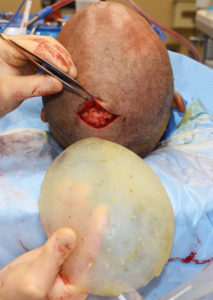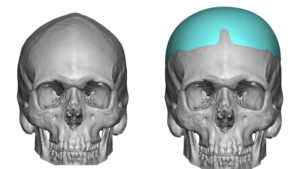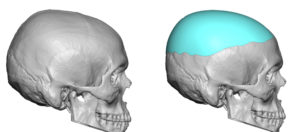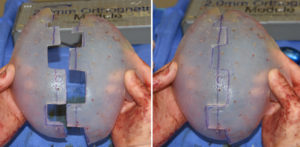Background: The skull is prone to a wide variety of shape malformations by virtue of its multiple suture connections during development. Premature fusion of these sutures cause well known forms of head deformity known as craniosynostoses. While these classic forms of craniosynostosis are the result of near or complete premature fusion of these suture lines there are greater numbers of people who are affected by lesser degrees of suture line fusion. As a result they present with less severe head shape deformities but ones that are aesthetically distressing nonetheless.
One such lesser craniosynostosis variant head shape deformity is that of the peaked or triangular head shape. Rather than a rounder top of the head from front and back views it is shaped more like an inverted V. Its appearance suggests a high sagittal ridge, which in some more minor cases may be true, but more often is due to parasagittal skull deficiencies. Lateral to the sagittal suture the skull has not fully expanded. This can also appreciated by the more inward positioning of the temporal line…contributing to an overall narrow head shape.
Rounding up and out the peaked head shape is the key to getting an improved head shape. There may be a slight need to reduce the sagittal ridge but this is not going to make a major change in head shape. It is the augmentation of the deficient sides that makes the more important aesthetic contribution.





Beyond the need for an improved head shape, it is also important to not create an undue scar burden as well. This requires some innovative thought into how it can be placed with the scar length in mind.
Case Highlights:
1) A peaked head shape deformity is when the height of the skull has a prominent sagittal ridge with parasagittal deficiency.
2) Creating a rounder head shape requires requires primary augmentation of the parasagittal skull deficiency which is best done with a custom skull implant.
3) To limit the length of the scalp scar in men with shaved head a geometric split implant insertion technique is needed.
Dr. Barry Eppley
Indianapolis, Indiana






